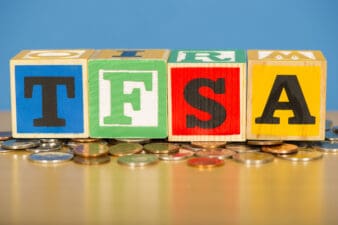An inverted yield curve is a sign of economic turbulence. When short-term bonds have higher yields than long term bonds, it means that investors see more risk in the short run than in the long run. The long run is generally harder to predict than the short run, so if investors are fleeing short-term treasuries, it generally means that they have high conviction in near term economic trouble. After all, the default assumption is that the long term, being unpredictable, is riskier than the near term, which has a narrower range of possible outcomes.
Investors often worry when yield curves invert, due to the perception that they portend future recessions. You may have heard in the media that “yield curve inversion has predicted every past recession.” It’s technically true that every time the yield curve has inverted, the economy has eventually entered a recession. However, recessions are, according to the business cycle, inevitable. Recessions do not always swiftly follow yield curve inversions: we are currently in the midst of two years of yield curve inversion and no recession. If a recession occurs this year, will the yield curve really have “predicted” it? It will have taken two years for one event to follow the other.
Nevertheless, there is some kind of relationship between yield curve inversion and economic turbulence. So, it pays to know how to invest when the yield curve is inverted.
Hold recession-resistant stocks
The ideal stock to hold when the yield curve is inverted is one that will fare well even if there’s a recession. Dollar stores, utilities and alcoholic beverage vendors fit this description.
One stock that has historically been fairly recession resistant is Fortis Inc (TSX:FTS). The stock price dipped in each of the two most recent recessions (2008 and 2020), but in each case, it declined less than the market as a whole.
What explains Fortis’ ability to defy the broader economy? A big part of it is simply the fact that it is a regulated utility. Such companies face little competition, and their key product is a life necessity sold on a recurring contract, generating recurring revenue. This gives utilities high revenue stability. Throw in a little investment in growth along with cost discipline, and you have a recipe for gradually growing earnings. That’s what we’ve seen with Fortis.
Be wary with financials
Financials like banks can be risky when the yield curve inverts. Banks borrow on the short end of the curve and lend on the long end, so inverted yield curves should in theory squeeze their margins. The Canadian banks’ margins are all pretty healthy, but sometimes it takes time for yield curve inversion to pressure them to raise interest rates. Non-bank lenders, which don’t take deposits, are often safer bets when the yield curve is inverted. They simply finance their loans with bonds, allowing them to match the maturity of their financing to the maturity of their assets.
A good example of a non-bank lender is First National Financial (TSX:FN). It’s a Canadian mortgage lender that partners with mortgage brokers to help people find mortgages. It issues bonds to finance its loans, so it doesn’t face the risk of deposit flight: FN bonds can’t simply be “called” back. Consistent with my theory that non-bank lenders are better than banks in this environment, FN is doing much better than most Canadian banks this year. In its most recent quarter, it delivered 10% growth in mortgages, 26% growth in revenue, and 108% growth in earnings. It was a solid showing, much better than any of the Big Six banks managed in the same period.








